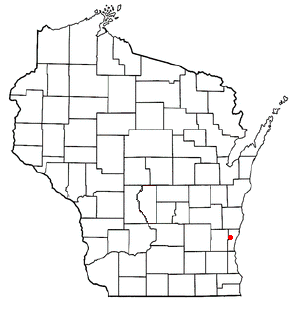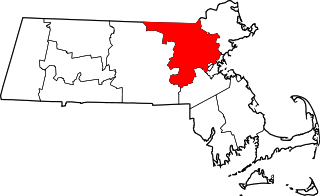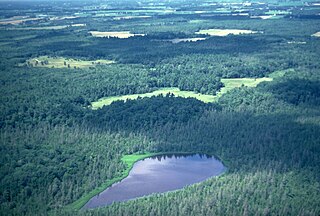The National Park Service has designated eleven National Natural Landmarks in Massachusetts. Most of these are bogs, swamps, wetlands and old-growth forest.
Contents
| Name | Image | Date | Location | County | Ownership | Description |
|---|---|---|---|---|---|---|
| Acushnet Cedar Swamp |  | June 1972 | New Bedford | Bristol | state | One of the state's largest, wildest and most impenetrable swamps, and an outstanding example of the diversity of conditions and species in the glaciated section of the oak-chestnut forest. [1] |
| Bartholomew's Cobble |  | October 1971 | Ashley Falls | Berkshire | private (The Trustees of Reservations) | Contains over 800 plant species, including North America's greatest diversity of ferns. [2] |
| Cold River Virgin Forest | April 1980 | Mohawk Trail State Forest | Berkshire, Franklin | state | Probably the only virgin hemlock-northern hardwood forest in New England, with the hemlocks and sugar maples exceeding 400 years in age. [3] | |
| Fannie Stebbins Refuge |  | June 1972 | Longmeadow | Hampden | municipal | The area contains the only sizeable example of Connecticut River flood plain under preservation, exhibiting many successional stages including upland and flood plain forest, swamp, marsh, ponds, and meadows. [4] |
| Gay Head Cliffs |  | October 1975 | Aquinnah | Dukes | native lands (Wampanoag Tribe of Gay Head) | An unusual cross section of Raritan and Magothy sediments of Cretaceous age and fossil-bearing sands of Miocene and either Pliocene or Pleistocene ages that rise as much as 150 feet (46 m) above sea level, resting on the continental shelf and detached from the mainland. The center of Wampanoag native culture. [5] |
| Hawley Bog |  | May 1974 | Hawley | Franklin | private | Unspoiled cold northern boreal sphagnum-heath bog occupying an old shallow glacial lake basin which demonstrates bog succession from the central open water pond to the surrounding spruce-fir forest. [6] |
| Mt. Greylock Old Growth Spruce |  | November 1987 | Adams | Berkshire | state | This site contains three separate stands of undisturbed old growth red spruce on the northwest slopes of Mount Greylock, the highest mountain in Massachusetts. These stands have been undisturbed for at least 150–180 years, and may be virgin. No other old growth red spruce stands are known in southern New England, while only a few comparable or better sites occur in northern New England. [7] |
| Muskeget Island |  | April 1980 | west of Tuckernuck and Nantucket Islands | Nantucket | municipal, private | The only known locality where the Muskeget beach vole is found, and southernmost station where the gray seal breeds. The area supports an enormous nesting population of herring gulls and black-backed gulls. [8] |
| North and South Rivers |  | May 1977 | Norwell | Plymouth | state, municipal, private | Classic examples of drowned river-mouth estuaries, supporting at least 45 species of fish and many species of birds. The site contains salt marsh, brackish marsh, and freshwater marsh areas. [9] |
| Poutwater Pond |  | June 1972 | Holden | Worcester | state | An undisturbed sphagnum-heath bog in southern New England, illustrating ecological succession from open water in a glacial depression to upland forest. [10] |
| Reedy Meadow (was Lynnfield Marsh) |  | June 1972 | Between Wakefield and South Lynnfield | Essex | municipal, | The largest freshwater cattail marsh in Massachusetts. The area preserves the habitat requirements of many bird species and serves as a breeding ground for the king rail and least bittern, rare species in the region. [11] |










